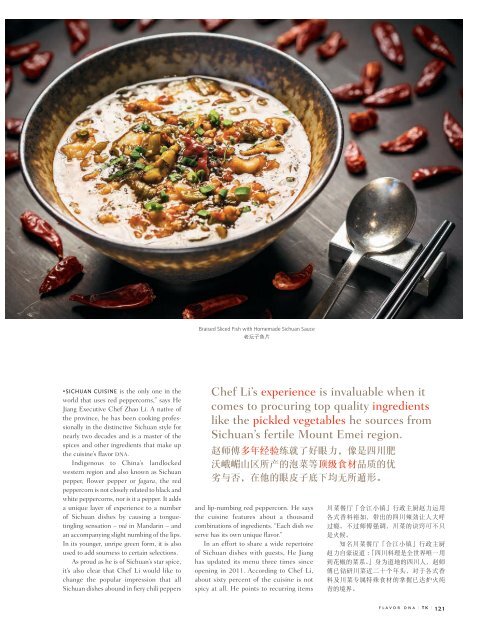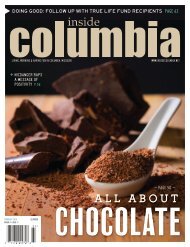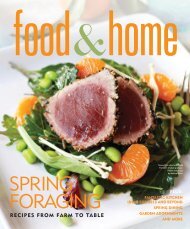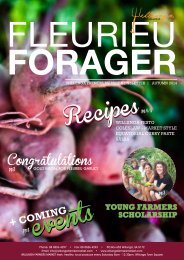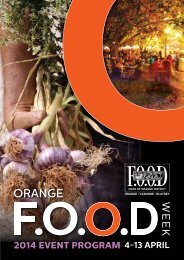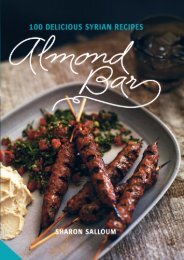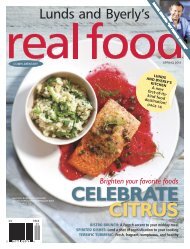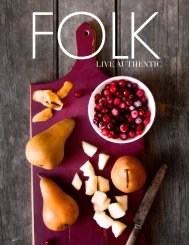Tasting Kitchen
Welcome to Tasting Kitchen. Season’s Greetings – or should I say Seasonings Greetings! This holiday TK issue is full of spices and flavorings. We talk to four talented and ambitious chefs about the flavor profile – or Flavor DNA – of dishes from India, Sichuan, Vietnam and the Isaan region of Thailand. Think cardamom, black salt and saffron, red peppercorns, red chilies and green chilies, dill, Kaffir lime, lemongrass, coriander, galangal and turmeric. We take a look at spices in history, and how even back in the Middle Ages savvy marketers knew the value of a good story. Spice merchants claimed that birds used cinnamon sticks to make giant nests in the cliffs above beaches in India, which “cinnamon hunters” then plotted to obtain. Today India is still associated with the world’s best spices. In this issue, for our first Tasting Destinations feature, TK’s Director of Photography David Hartung and Senior Writer Lucy Morgan traveled to Old Delhi to visit the world’s largest spice market and to New Delhi to visit one of the world’s top restaurants for modern Indian cuisine. One of our featured wines is the peppery Austrian Grüner Veltliner. We also talk to a New Zealand Wine Master about what makes great wine great, and to a leading French Champagne Chef de Cave about the value of patience and restraint. There are also some crabs running loose in the issue. A master chef in Macau shares his recipe for Quinoa Lobster Salad while five more from Hong Kong and Singapore share their favorite crab dishes and culinary musings. Happy Holidays,
Welcome to Tasting Kitchen.
Season’s Greetings – or should I say
Seasonings Greetings!
This holiday TK issue is full of spices and
flavorings.
We talk to four talented and ambitious
chefs about the flavor profile – or Flavor DNA
– of dishes from India, Sichuan, Vietnam and
the Isaan region of Thailand. Think cardamom,
black salt and saffron, red peppercorns, red
chilies and green chilies, dill, Kaffir lime,
lemongrass, coriander, galangal and turmeric.
We take a look at spices in history, and
how even back in the Middle Ages savvy marketers knew the value of a good story.
Spice merchants claimed that birds used cinnamon sticks to make giant nests in the
cliffs above beaches in India, which “cinnamon hunters” then plotted to obtain.
Today India is still associated with the world’s best spices. In this issue, for
our first Tasting Destinations feature, TK’s Director of Photography David Hartung
and Senior Writer Lucy Morgan traveled to Old Delhi to visit the world’s largest
spice market and to New Delhi to visit one of the world’s top restaurants for modern
Indian cuisine.
One of our featured wines is the peppery Austrian Grüner Veltliner. We also
talk to a New Zealand Wine Master about what makes great wine great, and to a
leading French Champagne Chef de Cave about the value of patience and restraint.
There are also some crabs running loose in the issue. A master chef in Macau
shares his recipe for Quinoa Lobster Salad while five more from Hong Kong and
Singapore share their favorite crab dishes and culinary musings.
Happy Holidays,
You also want an ePaper? Increase the reach of your titles
YUMPU automatically turns print PDFs into web optimized ePapers that Google loves.
Braised Sliced Fish with Homemade Sichuan Sauce<br />
老 壇 子 魚 片<br />
“SICHUAN CUISINE is the only one in the<br />
world that uses red peppercorns,” says He<br />
Jiang Executive Chef Zhao Li. A native of<br />
the province, he has been cooking professionally<br />
in the distinctive Sichuan style for<br />
nearly two decades and is a master of the<br />
spices and other ingredients that make up<br />
the cuisine’s flavor DNA.<br />
Indigenous to China’s landlocked<br />
western region and also known as Sichuan<br />
pepper, flower pepper or fagara, the red<br />
peppercorn is not closely related to black and<br />
white peppercorns, nor is it a pepper. It adds<br />
a unique layer of experience to a number<br />
of Sichuan dishes by causing a tonguetingling<br />
sensation – má in Mandarin – and<br />
an accompanying slight numbing of the lips.<br />
In its younger, unripe green form, it is also<br />
used to add sourness to certain selections.<br />
As proud as he is of Sichuan’s star spice,<br />
it’s also clear that Chef Li would like to<br />
change the popular impression that all<br />
Sichuan dishes abound in fiery chili peppers<br />
Chef Li’s experience is invaluable when it<br />
comes to procuring top quality ingredients<br />
like the pickled vegetables he sources from<br />
Sichuan’s fertile Mount Emei region.<br />
赵 师 傅 多 年 经 验 练 就 了 好 眼 力 , 像 是 四 川 肥<br />
沃 峨 嵋 山 区 所 产 的 泡 菜 等 顶 级 食 材 品 质 的 优<br />
劣 与 否 , 在 他 的 眼 皮 子 底 下 均 无 所 遁 形 。<br />
and lip-numbing red peppercorn. He says<br />
the cuisine features about a thousand<br />
combinations of ingredients. “Each dish we<br />
serve has its own unique flavor.”<br />
In an effort to share a wide repertoire<br />
of Sichuan dishes with guests, He Jiang<br />
has updated its menu three times since<br />
opening in 2011. According to Chef Li,<br />
about sixty percent of the cuisine is not<br />
spicy at all. He points to recurring items<br />
川 菜 餐 厅 「 合 江 小 镇 」 行 政 主 厨 赵 力 运 用<br />
各 式 香 料 裕 如 , 带 出 的 四 川 辣 劲 让 人 大 呼<br />
过 瘾 。 不 过 师 傅 强 调 , 川 菜 的 诀 窍 可 不 只<br />
是 火 候 。<br />
知 名 川 菜 餐 厅 「 合 江 小 镇 」 行 政 主 厨<br />
赵 力 自 豪 说 道 :「 四 川 料 理 是 全 世 界 唯 一 用<br />
到 花 椒 的 菜 系 。」 身 为 道 地 的 四 川 人 , 赵 师<br />
傅 已 钻 研 川 菜 近 二 十 个 年 头 , 对 于 各 式 香<br />
料 及 川 菜 专 属 特 殊 食 材 的 掌 握 已 达 炉 火 纯<br />
青 的 境 界 。<br />
flavor dna | TK | 121


